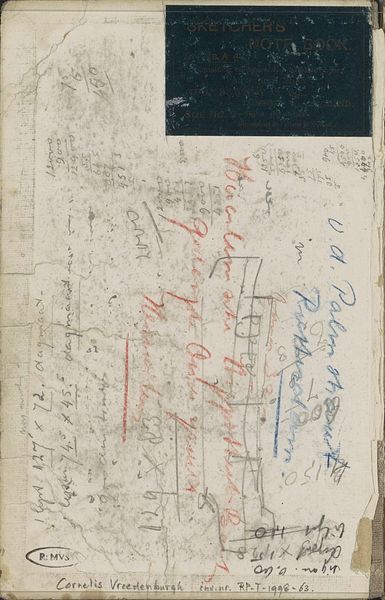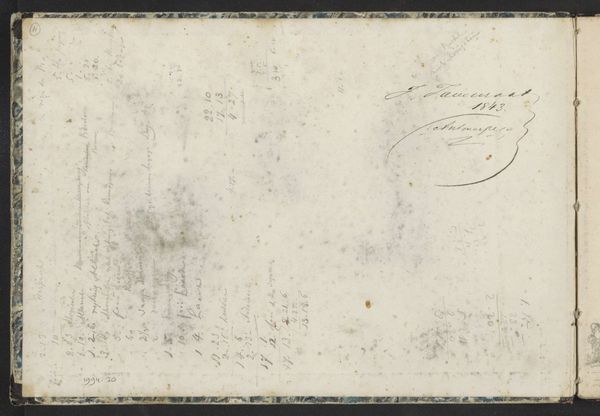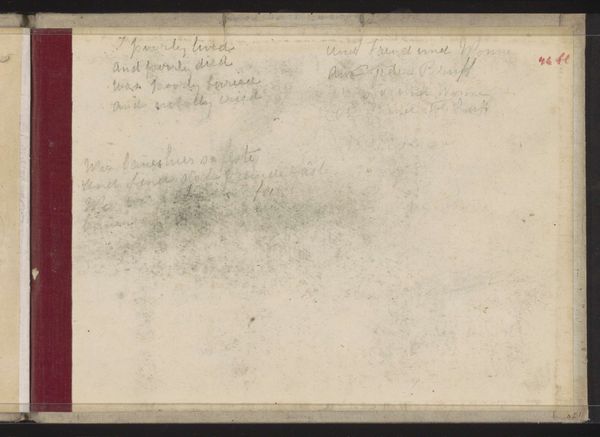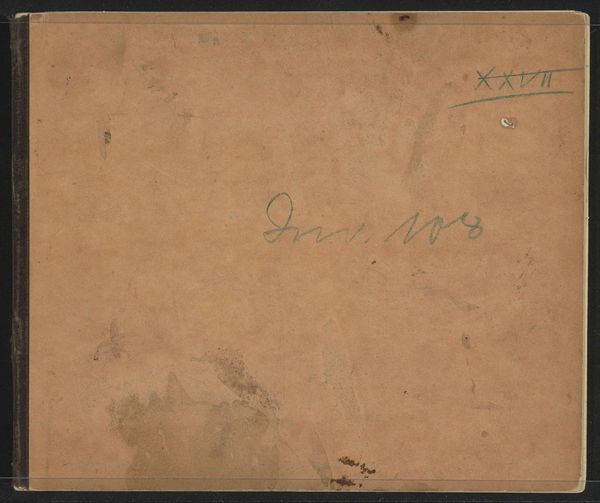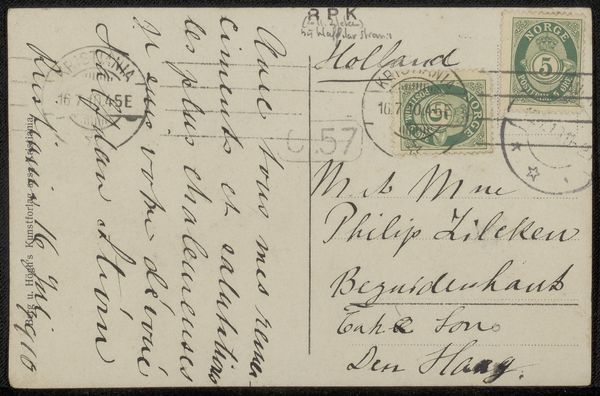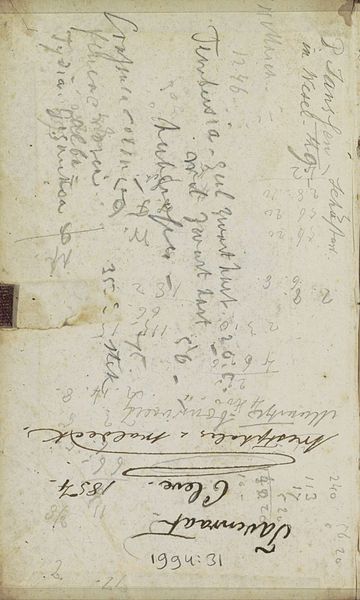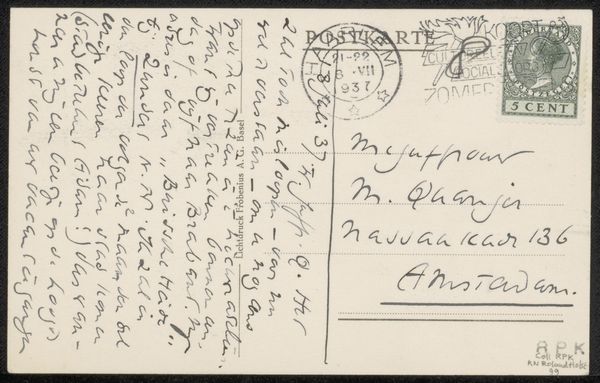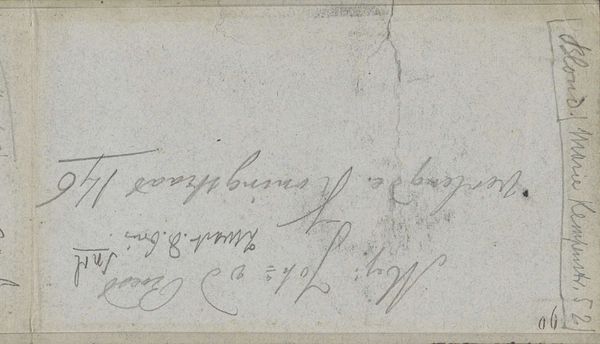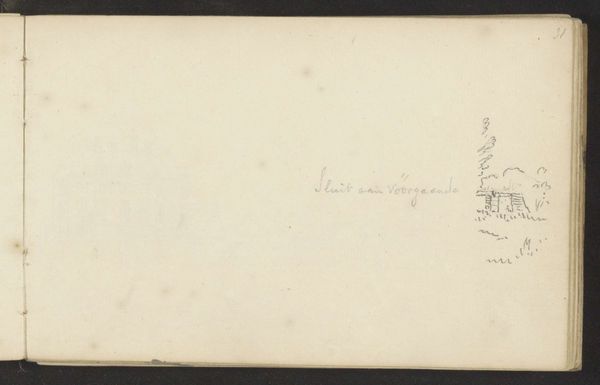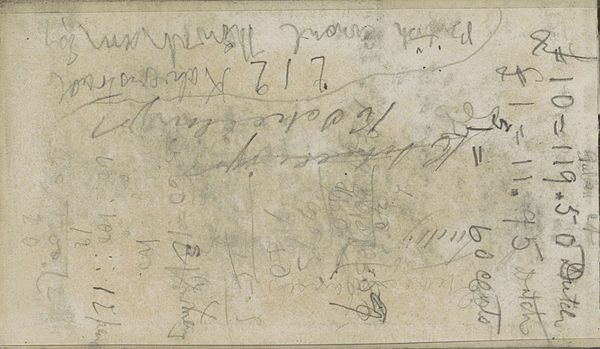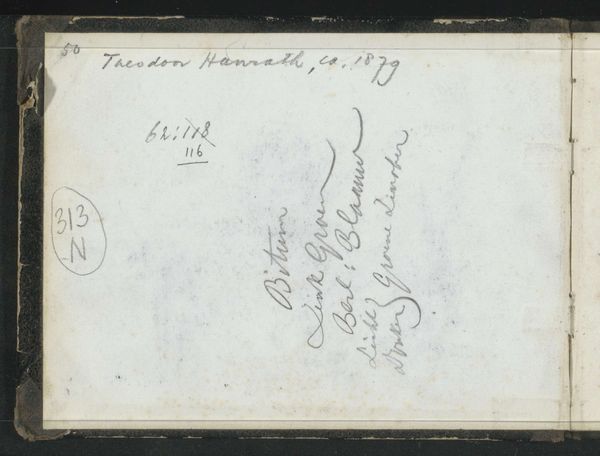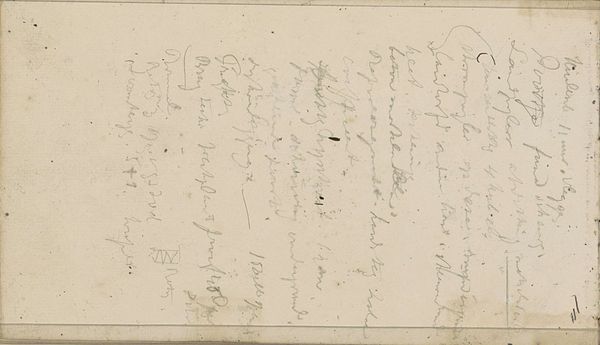
drawing, paper, ink, graphite
#
portrait
#
drawing
#
aged paper
#
toned paper
#
homemade paper
#
dutch-golden-age
#
ink paper printed
#
sketch book
#
hand drawn type
#
paper
#
personal sketchbook
#
ink
#
graphite
#
sketchbook drawing
#
sketchbook art
Dimensions: height 95 mm, width 154 mm
Copyright: Rijks Museum: Open Domain
Curator: This artwork, created in 1892 by Willem Cornelis Rip, is entitled "Notities en berekeningen"—Notes and Calculations. It's executed in ink and graphite on paper. Editor: My initial reaction is one of intimacy, of being allowed access to a private thought process. The toned paper, the faded ink... it feels incredibly fragile and temporal. Curator: The very act of using handmade or aged paper imbues the calculations with a kind of reverence, doesn’t it? It almost elevates these everyday jottings into something more enduring. Rip's choice to use ink, a relatively permanent medium, suggests a certain weight, a significance assigned to the act of calculation itself. Editor: Absolutely. And consider the socio-economic implications of the sketchbook itself. Paper wasn’t always readily available or affordable. Owning a sketchbook signifies a degree of financial comfort, doesn't it? The type of paper – perhaps locally sourced, the visible fibers suggesting a handmade process, reveals connections to particular craft practices and maybe a local market of materials? Curator: The script also evokes meaning, as if this wasn't only numbers being processed but ideas being formed. Perhaps they acted as a foundation, like visual anchors, holding in place values of some kind, helping organize social relations. It seems he saw the page as an extension of himself, not just a place for objective recording. Editor: The layering of different inputs, scribbles on top of sums – these palimpsests fascinate me. Each mark builds upon the last, constructing a physical manifestation of the artist's mind at work. Curator: There is something quietly defiant in the resistance to mechanical calculation – the use of ink and paper for what a machine can calculate seems like a turn towards history in some respects. It almost seems ritualistic. Editor: Yes! I'm wondering about the social sphere and who may have witnessed the creation of these sketches, the setting, time of day. Perhaps by digging deeper into the cultural landscape, the social customs around calculation at that moment we could unpack the narrative and implications much further? Curator: That’s a fascinating approach, focusing on the specific historical conditions under which this material object came into being. Thank you for offering such a material and historical perspective. Editor: And thank you, for drawing my attention to the symbolic nature of Rip’s process. It’s easy to get lost in the weeds when you center production. It’s a constant process of learning and revelation.
Comments
No comments
Be the first to comment and join the conversation on the ultimate creative platform.
